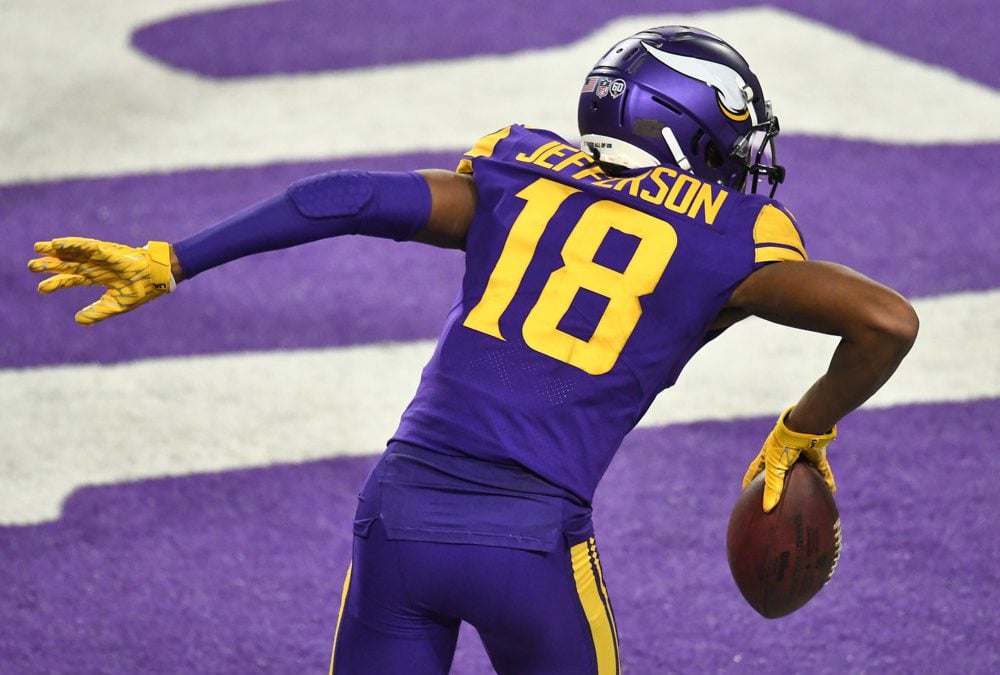Welcome to the first edition of Leverage for the 2021-2022 NFL Season!
My goal in this space is to make you a better GPP player by highlighting concepts that can help you differentiate from your opponents and climb the leaderboard. Each week I will highlight some of the thought process or strategy that goes into my approach when making tournament lineups. I’ll then use some specific examples from that week to help illustrate how I intend to implement those concepts into my own GPP lineups. The examples I highlight will be in my portfolio of lineups but if you want to improve considerably as a GPP player, mastering the concepts are more important than copying the answers.
Most DFS players understand that you need to differentiate in GPP lineups. They will identify individual “off-the-radar” plays that can help them ascend the leaderboard if they get the play correct. Very simply, if you have two players in your lineup and one is utilized by 1% of the field and the other utilized by 20% of the field, the 1% player has a stronger impact on your finish in the tournament because their performance separates you further from the field. If they do well, your lineup climbs the leaderboard. If they fail, the lineup is held back while your opponents pass you. This is the most basic way to think about being contrarian in GPPs — but WHY do we want to separate from the field? In most contests, there is a much higher upside than downside to separating. Your entry fee is static and thus the downside risk is locked in. You’ve spent your $5/$10/$20, etc. and your losses are capped per entry. Meanwhile, the range of outcomes to the upside is dictated by the payout structures. In modern day DFS, most of the contest structures are extremely top-heavy and thus your range of outcomes to the upside is enormous compared to your range of outcomes on the downside. You are disproportionately rewarded when things go right and your downside when things go wrong stays the same. This may seem elementary, but the reason I’m drawing your attention to the basics is to touch on a concept that helps me when I’m entering GPP lineups: The Pendulum.
I think most questions in DFS can be better answered by understanding the context of the question is built on a pendulum. In the instance above, the payout structures are the context that drives the pendulum. Imagine a payout structure where first place earned +$10,000 but last place earned $-10,000. You would want to play this contest very differently than a DFS contest where first place is +$1,000,000 and last place is -$20. Contest A rewards creating lineups that have a higher floor relative to your opponents. Contest B only cares about ceiling. The example is an exaggerated one meant to illustrate the contextual differences that should dictate your decision-making.
Similarly, imagine a DFS player’s goals. Player A wants to feel their expertise exhibited throughout their lineups via player selection. They believe they can identify a tight pool of players that will out-perform the field and they want their week dictated by the leverage they create from the performance of a few players. Player B wants to exhibit their expertise via lineup construction. Their goal is to create lineups that can individually create leverage against the field, but they’re less confident in player selection. They’re more concerned about differentiation than concentration. These are two different types of preferred experiences and there are many other stops in between as the pendulum swings from Player A’s goals to Player B’s goals.
So many of the questions I receive about creating tournament lineups are static. They are not adjusted for the context of the contest the player is entering or their goals with their play. As a result, I feel constrained by trying to create a standardized answer for a nuanced question. While I can try to answer all of those individual questions with a standardized approach each week, I don’t believe that will actually make you a substantially better thinker and GPP player. My goal with Leverage is to improve your decision-making and your approach in tournaments by helping you align your individual goals with the tactics and strategy that can best achieve them. In order to do so, you’ll need to understand that the context behind most of the decisions you’re making exists on a pendulum. Identify what your goals are, where you can exhibit leverage on the field, and how much leverage you need to create to separate in the contests you’re playing. From there, try to simplify the number of things you need to get right in order to be rewarded. We’ll do this primarily through correlation (which we’ll discuss more in depth). These are the keys to becoming a strong tournament player.
Ways to Create Leverage
Let’s touch on some of the most basic ways to create Leverage in your tournament lineups.
1. Contrarian Game Stacks or Player Selection
We create the highest-quality NFL content
Our team includes renowned fantasy analysts Evan Silva and Adam Levitan, high-stakes professional DFS players, and specialists who cover niche areas that we believe are important to understand.
We don’t sell lineups or claim to have all of the answers. We do analyze what’s happening in a way that’s digestible and actionable, with a goal of preparing you to make the best decisions possible during the 2025 NFL season.
Read on to learn what’s inside our In-Season NFL subscription.
Full Details! » Already a subscriber? Log In

